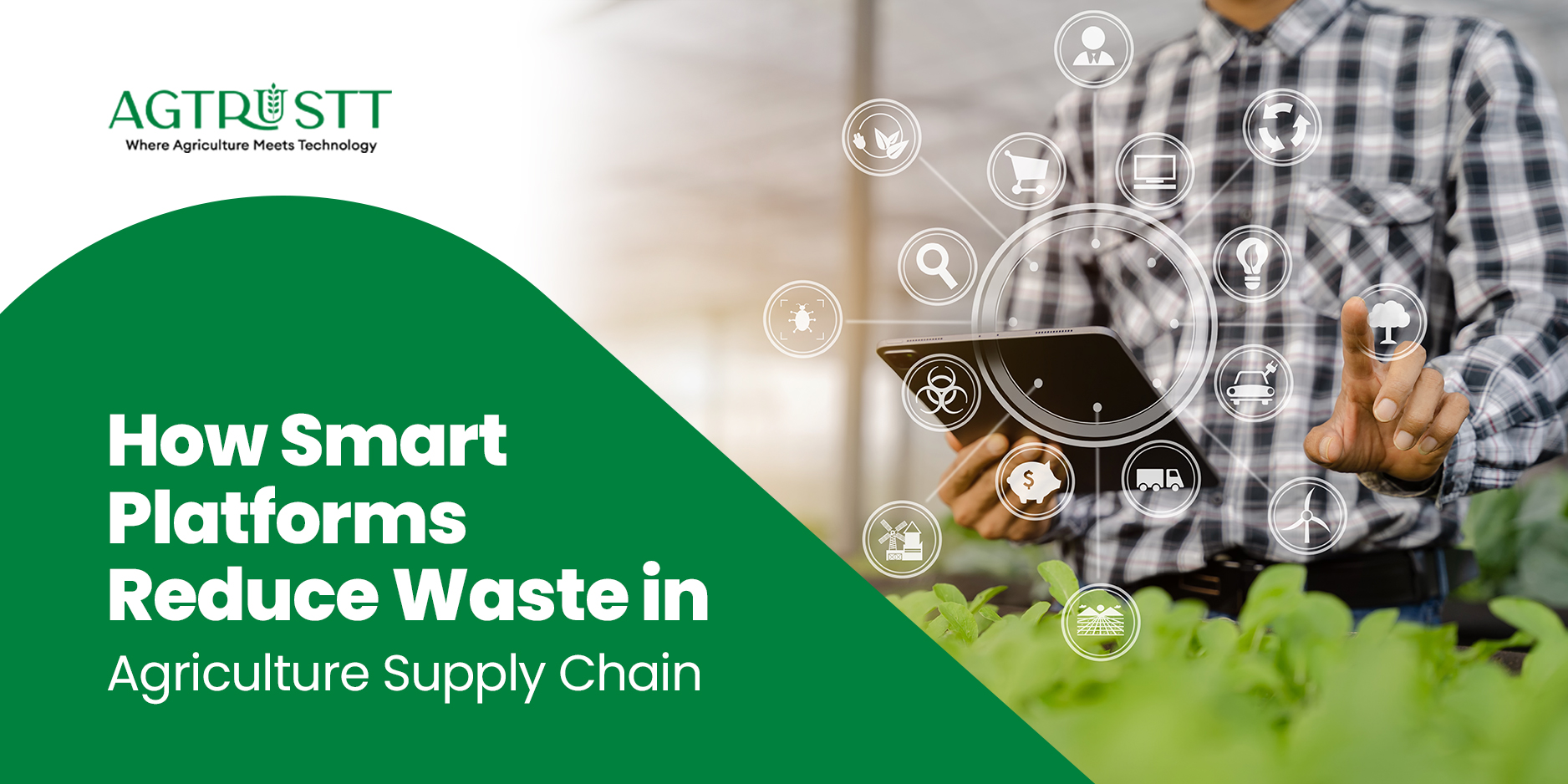Food security depends on agriculture, which is the main source through which much of the harvested food never reaches the users because of inefficiencies in the supply chain. Unnecessary waste in agriculture supply chain is caused by spoilage, inefficient resource management, and insufficient information in a timely manner. This is where we have smart platforms. In Canada, where sustainable food systems and agri-innovation are gaining strong national focus, smart agriculture platforms are proving essential for improving food distribution and reducing post-harvest waste.
Smart platforms helping farmers to prevent crop losses
Farmers are usually subjected to complexities such as bad weather, pests, and low demand. Smart agriculture platforms offer data-driven forecasts, which will inform farmers on the risks in advance, as well as on how and when to harvest their goods. They also link farmers to buyers directly, and since it has cut storage time, it means the produce will be in the market sooner. Through such insights, the farmers will be able to make more informed choices that reduce the losses and enhance output.
Smart platforms help bridge the digital divide between farmers, processors, and buyers, with all data being captured and shared in real time. Canadian agri-businesses are increasingly adopting such smart logistics to manage long-distance food transport efficiently, especially across provinces and export routes. AgTrustt Integrated ERP saves processors all the procurement, production, and inventory under one seamless system, with complete traceability and waste reduction.
Is Technology the Solution to the Distribution Problem?
Agri-tech solutions enable an organization to monitor the transport routes, storage facilities, and delivery schedules to ensure that food reaches the destination in the best possible state. Delays can be minimized using temperature and humidity sensors along with GPS-based logistics solutions. This keeps food fresher and helps in saving the expense that would be used in spoilage during transportation.
Real-time information reduces supply chain mistakes
Miscommunication among producers, distributors, and retailers has been identified as one of the greatest contributors to agricultural wastage. The smart platforms bring together the information in a centralized manner to ensure that all stakeholders involved in the agriculture supply chain are aware of what is occurring in real time. Not to mention the availability of stock, schedules of shipment, or quality control, data transparency can help minimize duplication, delays, and errors that cause food waste.
Intelligent platforms make sustainability and profits
Smart platforms will ensure that resources such as water, fertilizers, and energy are utilized efficiently to enhance sustainability. Concurrently, improved planning will ensure that the businesses will not produce beyond the demand of the consumers.
Conclusion
For Canada’s expanding agri-tech landscape, these innovations can help achieve national food security goals, improve farm-to-market traceability, and support environmentally responsible production. You understand how smart agriculture platforms can provide substantial improvements in place and operation; it is time to think about AgTrustt, which is a tech-first agri-platform that constructs transparency, traceability, and trust throughout the entire agricultural value chain.

